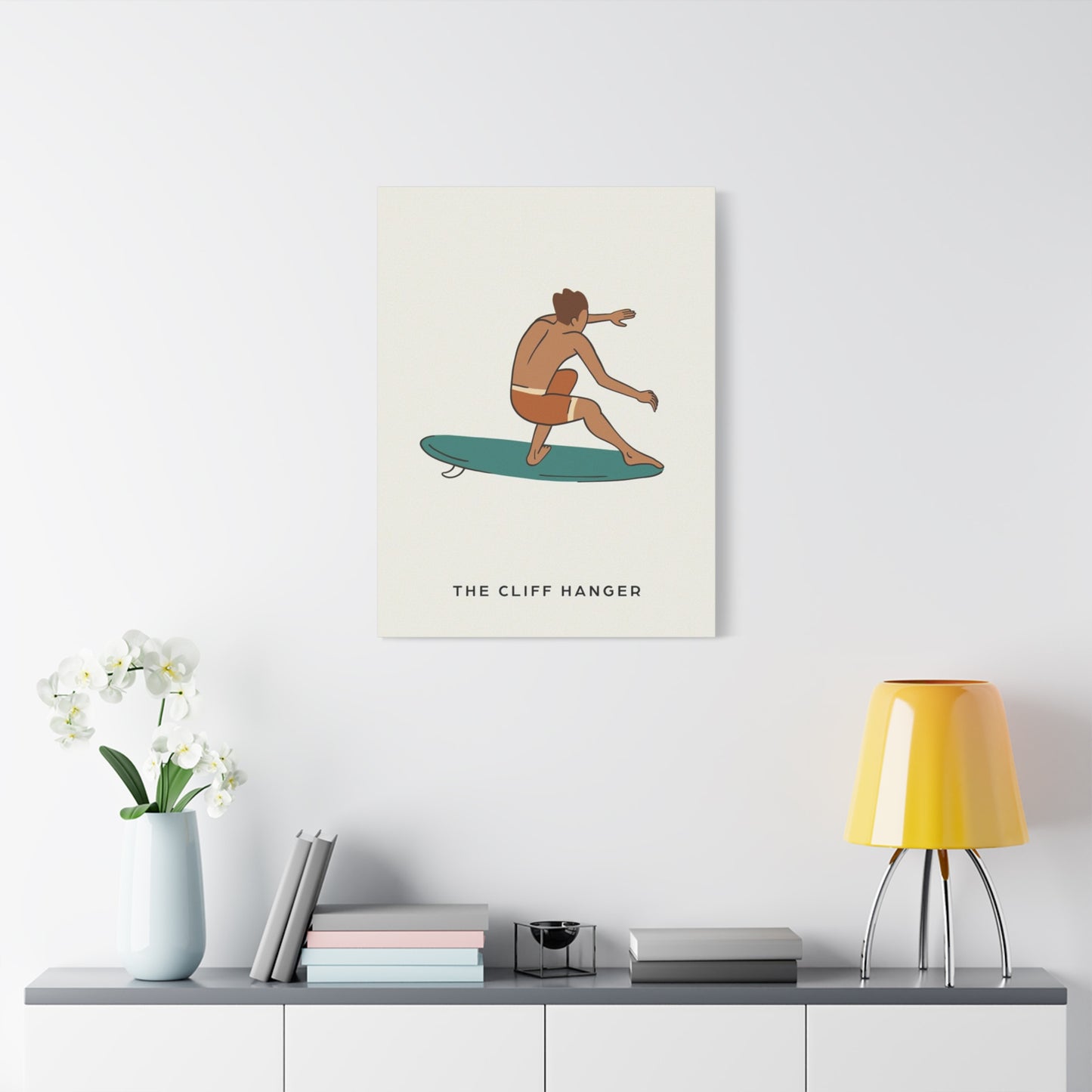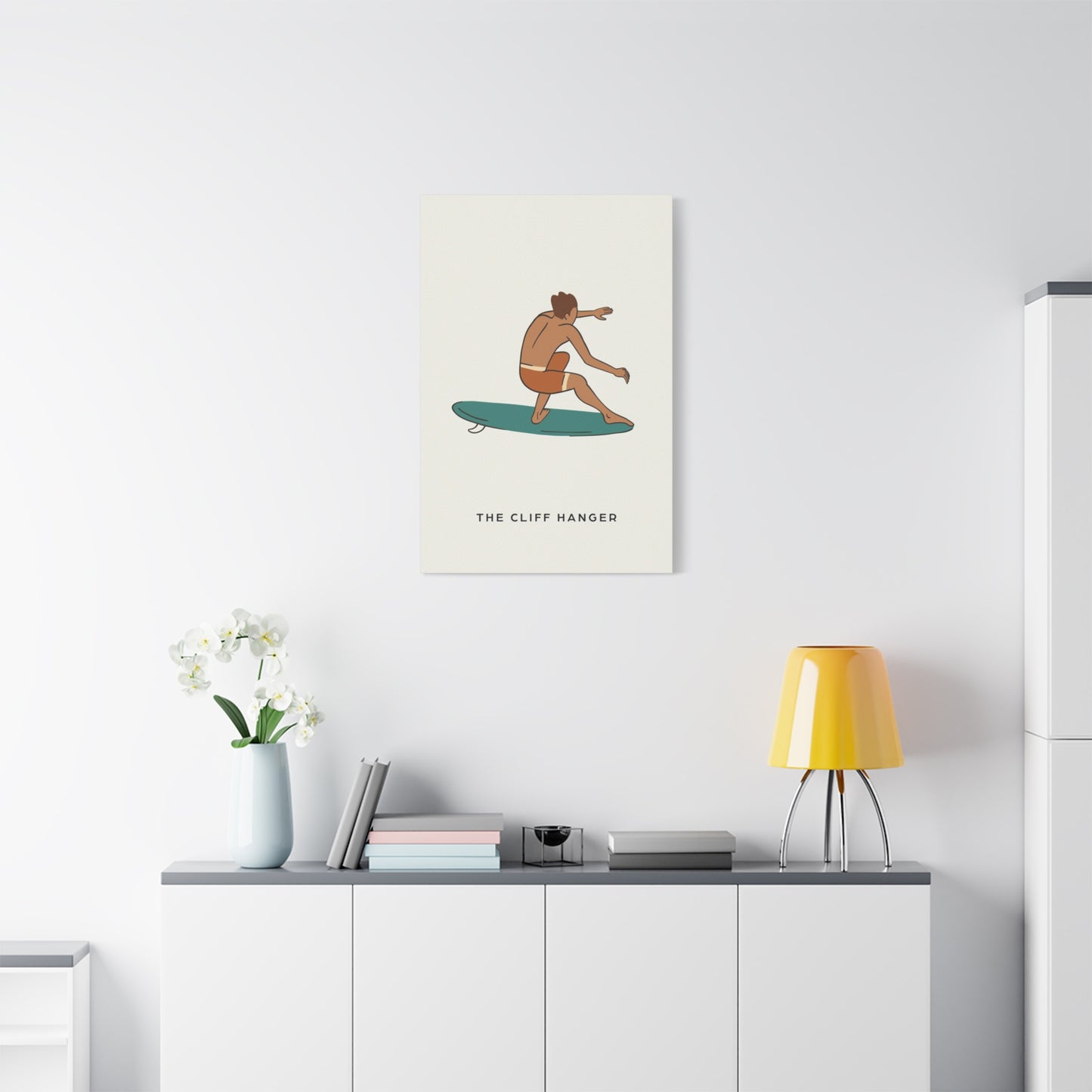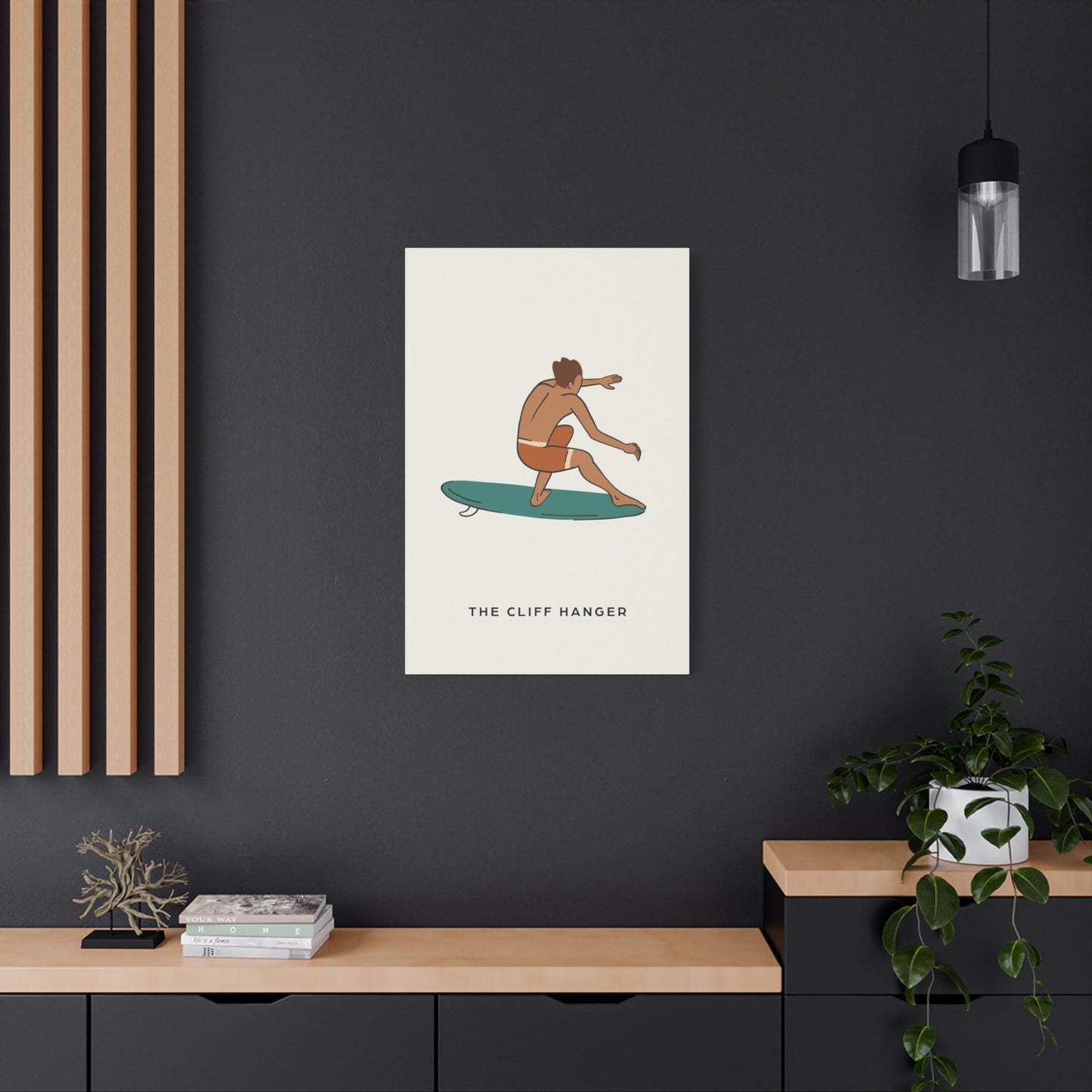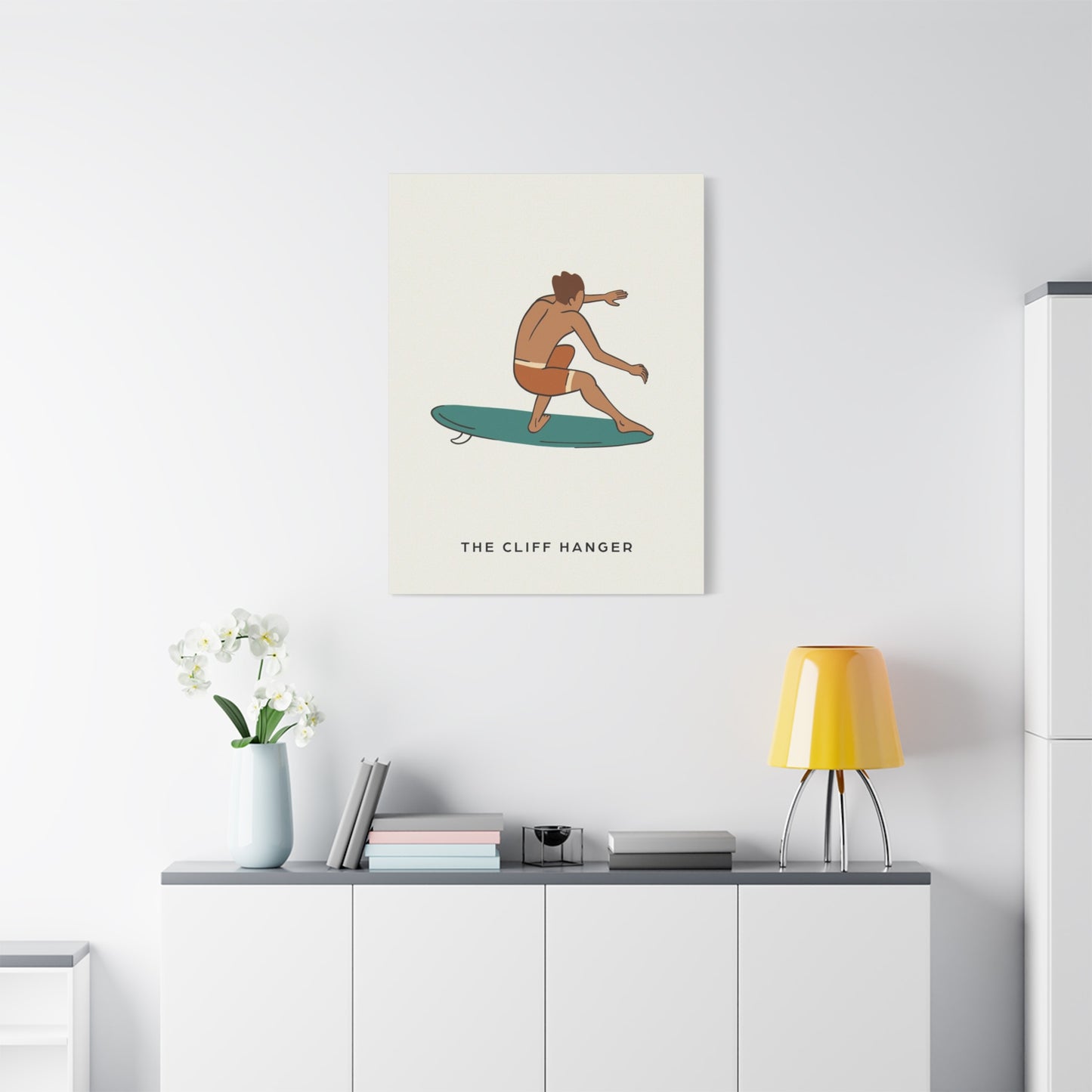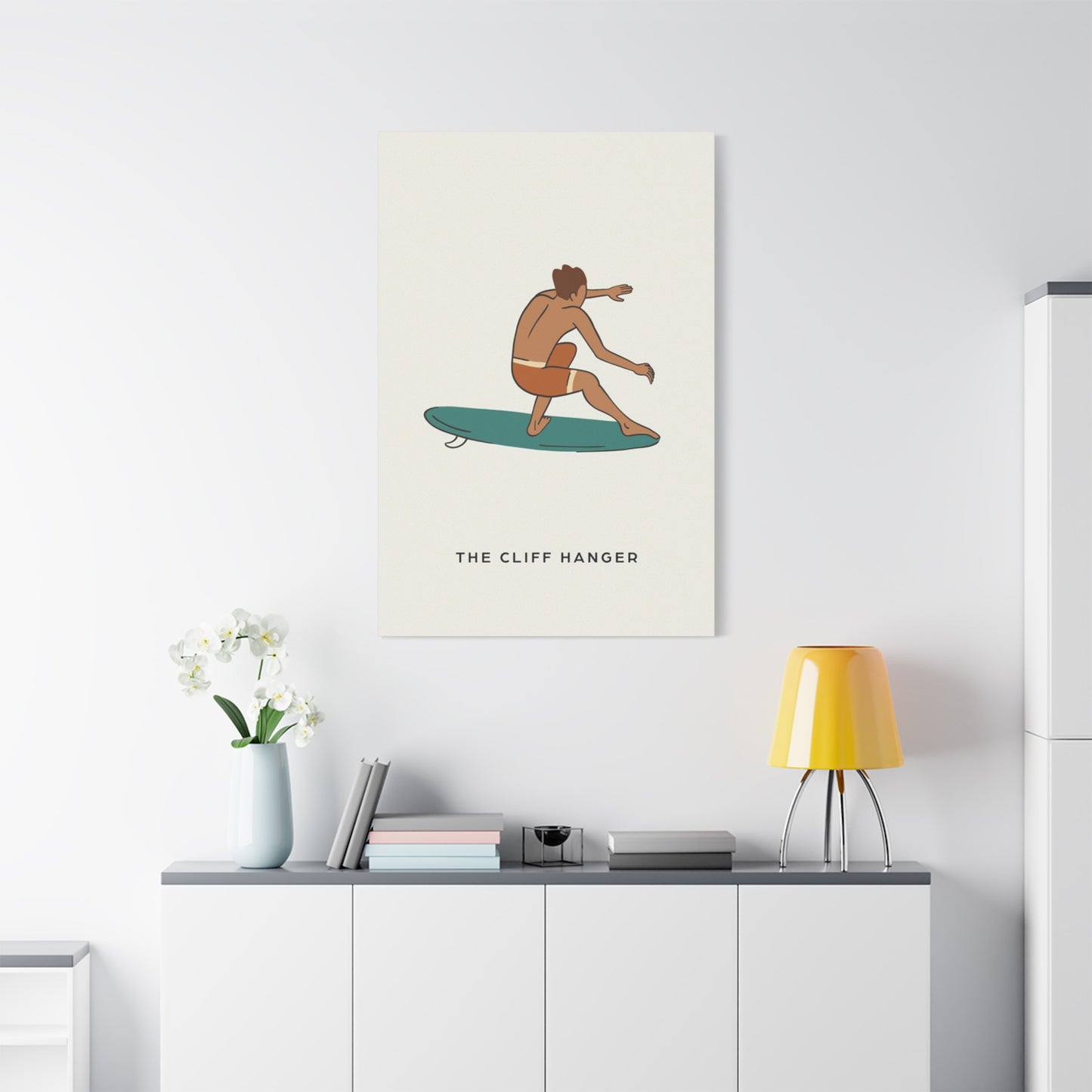Cliff Hanger Poster Wall art: Elevate Your Living Space with High-Octane Cinema Art
The world of action cinema has gifted audiences with countless memorable moments, breathtaking stunts, and adrenaline-pumping sequences that remain etched in our collective memory. Among these cinematic treasures stands a particular film that redefined mountain climbing thrillers and established new benchmarks for action choreography. Displaying artwork inspired by such legendary films transforms any ordinary room into a dynamic celebration of courage, adventure, and the indomitable human spirit. When you choose to decorate your home with pieces that capture the essence of heart-stopping action, you're not merely hanging pictures on walls—you're creating an atmosphere that energizes, inspires, and captivates everyone who enters your space.
The appeal of action-themed decorations extends far beyond simple nostalgia. These pieces serve as constant reminders of determination, bravery, and the thrilling possibilities that exist when we push beyond our perceived limitations. Whether you're a dedicated collector of cinema memorabilia, an adventure enthusiast who lives for the thrill of extreme sports, or someone who appreciates striking visual statements that command attention, incorporating such dramatic artwork into your interior design creates focal points that spark conversation and reflect your personality. The vertical drama, intense color palettes, and dynamic compositions found in these pieces bring an unmistakable energy that few other decorative choices can match.
Iconic Action Art That Captures Cinema's Most Breathtaking Moments
Action cinema has evolved dramatically over the decades, but certain films remain timeless in their ability to quicken our pulse and keep us perched on the edge of our seats. The visual representation of these classic moments through carefully crafted artwork allows fans to relive the excitement whenever they glance at their walls. These pieces aren't simply reproductions—they're artistic interpretations that capture the raw emotion, danger, and spectacular scenery that made the original films unforgettable.
When examining what makes certain action artwork truly iconic, several elements consistently emerge. First, there's the compositional balance between the human element and the natural environment. The best pieces showcase the protagonist against overwhelming odds, whether that's a sheer rock face, impossible heights, or threatening weather conditions. This juxtaposition creates immediate visual tension that draws the viewer in and holds their attention. Second, the color schemes employed in these artworks typically feature bold contrasts—deep shadows against bright highlights, cool mountain tones against warm human elements, or the stark difference between safety and peril. These chromatic choices aren't accidental; they're deliberate artistic decisions that amplify the emotional impact.
The artistic merit of action-themed decorations lies in their ability to freeze a moment of pure kinetic energy. Unlike static portrait photography or peaceful landscape paintings, these pieces capture motion, danger, and the split-second decisions that define heroic moments. The viewer's eye travels across the composition, following implied movement lines that suggest the action that preceded and will follow the captured instant. This creates a narrative quality that engages the imagination and keeps the artwork feeling fresh even after years of daily viewing.
Furthermore, these pieces often incorporate elements of multiple artistic traditions. There's the graphic boldness of poster design, the atmospheric depth of landscape painting, and the dynamic composition of action photography all synthesized into a cohesive whole. This hybrid nature makes them versatile decorative elements that can complement various interior design styles, from modern minimalist spaces that benefit from a single bold statement piece to more eclectic environments where the artwork joins a curated collection of diverse visual elements.
Thrilling Wall Art That Transforms Any Room Into an Adventure Zone
The strategic placement of action-themed artwork can fundamentally alter the energy and atmosphere of any space. Unlike gentler decorative choices that fade into the background, these pieces demand attention and set an unmistakable tone. When you enter a room featuring such dynamic visuals, there's an immediate psychological shift—the space feels more energized, more exciting, and more reflective of an adventurous spirit.
Interior designers increasingly recognize the power of statement artwork to define a room's character. While traditional design wisdom might suggest subtle, calming imagery for most spaces, there's growing appreciation for the vitality that bold, action-oriented pieces bring to modern interiors. These artworks work particularly well in spaces dedicated to entertainment, exercise, or creative pursuits—areas where elevated energy levels enhance the room's function rather than detract from it.
The versatility of action-themed decorations might surprise those unfamiliar with their applications. While they naturally suit media rooms and home theaters, they also excel in home offices where they provide motivational visual reminders of perseverance and determination. In fitness areas, they reinforce the mentality required for pushing physical boundaries. Even in more unexpected locations like hallways, staircases, or transitional spaces, these pieces create memorable moments that give personality to areas that might otherwise feel overlooked or purely functional.
Scale plays a crucial role in maximizing the impact of these artworks. A substantial piece that commands a significant portion of wall space creates a focal point that organizes the entire room's visual hierarchy. Everything else in the space relates to this central element, whether complementing its colors, echoing its themes, or providing visual rest areas that prevent sensory overload. Conversely, smaller pieces can be grouped to create gallery walls that tell a broader story about adventure, achievement, and the spirit of exploration.
Lighting considerations significantly affect how these pieces are perceived and appreciated. Dramatic artwork benefits from carefully planned illumination that enhances its inherent intensity without creating glare or washing out important details. Track lighting, picture lights, or strategically positioned floor lamps can create dramatic shadows and highlights that change throughout the day, keeping the artwork feeling dynamic and alive. Natural light sources should be considered carefully—while some pieces thrive in bright, naturally lit spaces, others reveal their full power in more controlled lighting environments where shadows add mystery and depth.
Adventure Fan Essentials: Decorating with Action Cinema Inspiration
For genuine enthusiasts of action cinema and adventure narratives, surrounding yourself with visual reminders of favorite films isn't superficial decoration—it's an expression of core values and interests. These pieces communicate something important about who you are and what you value, serving as conversation starters that help like-minded individuals connect over shared passions.
The psychology behind displaying action-themed artwork reveals fascinating insights about how we construct our personal environments. We naturally gravitate toward images that reflect our aspirations, values, and idealized versions of ourselves. Action cinema, with its emphasis on courage, resourcefulness, and overcoming seemingly insurmountable obstacles, provides rich symbolic material that resonates with fundamental human desires for agency and achievement. When we display such imagery, we're creating daily visual affirmations that reinforce these positive qualities in our own lives.
Collecting action cinema artwork often becomes a journey of discovery and refinement. Initial purchases might be driven purely by emotional response—seeing a piece that captures a favorite moment and needing to own it. As collections develop, collectors often become more discerning, seeking specific artistic styles, rare editions, or pieces that complement existing holdings. This evolution transforms casual decoration into serious curation, with each acquisition representing a deliberate choice about how to represent one's passion.
The community aspect of collecting action-themed decorations shouldn't be underestimated. Whether through online forums, local collectors' groups, or simply friends who share similar interests, displaying these pieces creates opportunities for connection and shared enthusiasm. Visitors who recognize and appreciate particular artworks immediately establish common ground, leading to deeper conversations about favorite films, memorable scenes, and the broader cultural impact of action cinema. These connections often extend beyond surface-level small talk into genuine friendships built on mutual appreciation.
Authentication and quality become increasingly important as collections grow more sophisticated. Serious collectors learn to distinguish between mass-produced reproductions and limited edition prints, understand the significance of artist signatures and edition numbers, and appreciate the superior materials and printing techniques that separate premium offerings from budget alternatives. This knowledge transforms collecting from simple accumulation into educated investment, with certain pieces appreciating in value as they become rarer or as cultural appreciation for specific films grows over time.
Home Decor That Makes Every Day Feel Like an Adventure
Creating living spaces that inspire and energize requires more than functional furniture and adequate lighting. The decorative choices we make set the emotional tone of our environments, influencing our moods and mindsets in subtle but significant ways. Action-themed artwork contributes to adventurous home atmospheres by providing constant visual reminders of excitement, possibility, and the rewards of courage.
Lifestyle alignment between decorative choices and daily activities creates coherent, authentic living spaces. For individuals who pursue active outdoor recreation, martial arts training, adventure travel, or other physically demanding pastimes, action-themed decorations naturally reflect and reinforce these commitments. The artwork doesn't exist in isolation but rather as part of a broader lifestyle expressed through multiple channels. This alignment creates spaces that feel genuinely personal rather than following generic design templates.
Motivational effects of inspirational artwork shouldn't be dismissed as superficial or insignificant. Environmental psychology research consistently demonstrates that our surroundings influence our thoughts, feelings, and behaviors in measurable ways. Artwork depicting triumph over challenges, physical accomplishment, and determined effort creates subtle psychological priming effects that can influence our own approach to difficulties. While a poster obviously won't transform someone's personality, it can contribute to an environmental ecosystem that supports positive traits and behaviors.
Escape and fantasy elements provide psychological benefits in increasingly demanding modern life. Creating small refuges within our homes where we can mentally transport ourselves to more exciting scenarios offers valuable stress relief and emotional restoration. Action-themed artwork facilitates this mental transportation, serving as portals to more thrilling alternate realities. A few minutes spent mentally inhabiting the world depicted in a favorite piece can provide genuine relaxation and restoration before returning to daily responsibilities.
Social identity expression through decoration helps us signal our values and interests to others while reinforcing these aspects of identity for ourselves. Displaying action-themed artwork announces, "I value excitement, I appreciate courage, I embrace adventure"—both to visitors and to ourselves. This public declaration of identity creates accountability to live according to these values while attracting like-minded individuals who share similar perspectives.
Suspenseful Visual Elements That Command Attention
The artistic techniques that create suspense and tension in narrative media translate surprisingly well into static visual artwork. Understanding these techniques helps appreciate why certain action-themed pieces feel more gripping and emotionally engaging than others.
Compositional tension arises from unresolved visual elements that create psychological unease or anticipation. A figure reaching for a distant handhold creates tension because the outcome remains uncertain—will they make it or fall? A climber positioned asymmetrically within the frame, with vast empty space suggesting the void below, creates anxiety through imbalance and implied danger. These compositional choices activate our natural threat-detection systems, creating emotional responses that make artwork feel immediate and engaging.
Lighting creates atmosphere and emotional tone as powerfully in visual art as it does in cinema. High-contrast lighting with deep shadows suggests danger and uncertainty, areas where threats might lurk unseen. Dramatic backlighting creates silhouettes that emphasize form while obscuring details, engaging viewers' imaginations to fill in what can't be clearly seen. Golden hour lighting can create warm, heroic feelings, while cold, blue-toned light suggests danger and inhospitable environments. These lighting choices aren't merely aesthetic—they're psychological triggers that shape emotional responses.
Scale and perspective manipulations amplify the sense of drama and danger in action scenes. Emphasizing the height of climbs through exaggerated vertical perspective creates visceral feelings of exposure and vulnerability. Contrasting tiny human figures against massive environmental features emphasizes our fragility and the enormity of the challenges we choose to confront. These scale games speak to fundamental human anxieties about our small place in a vast, indifferent universe, creating emotional resonance that elevates artwork beyond simple illustration.
Moment selection—choosing which instant within a larger action sequence to freeze and represent—determines much of an action piece's effectiveness. The most powerful moments typically occur at the apex of action, the split-second of maximum tension before resolution. A climber mid-leap between holds, body fully extended over open space, creates more suspense than a secure resting position. A hero dangling by fingertips from a crumbling ledge generates more tension than a successful recovery onto stable ground. These peak moments capture concentrated drama that sustains interest through repeated viewing.
Visual storytelling through sequential implication creates narrative depth within single images. Although the viewer sees only one frozen moment, the composition suggests what came before and what follows, allowing us to construct the complete story in our imagination. This engagement of viewer creativity makes the experience more active and memorable than passive observation of self-evident scenes.
Bold Choices for Distinctive Interior Environments
Contemporary interior design increasingly values individuality and personal expression over adherence to rigid style rules. This evolution creates opportunities for bold decorative choices that would have seemed inappropriate or excessive under previous design paradigms. Action-themed artwork fits perfectly within this cultural shift toward more personalized, emotionally resonant spaces.
Style flexibility allows action-themed pieces to complement surprisingly diverse design aesthetics. Industrial spaces with exposed brick and metal accents benefit from the rawness and intensity of action artwork. Modern minimalist environments use single dramatic pieces as focal points within otherwise restrained spaces, allowing the artwork to command maximum attention. Traditional settings can incorporate action themes through more classical artistic treatments—think oil painting interpretations rather than contemporary graphic designs. Even eclectic, bohemian spaces accommodate action artwork as part of broader collections celebrating diverse experiences and interests.
Color coordination between artwork and surrounding elements creates visual harmony without requiring perfect matches. Identifying the dominant and accent colors within action-themed pieces allows for selective echoing throughout the space—perhaps picking up a blue tone in throw pillows, repeating an orange hue in a lamp base, or matching the neutral tones in artwork matting or frames with larger furniture pieces. This subtle color threading unifies the space while maintaining visual interest through varied applications of shared hues.
Contrast balancing prevents spaces from feeling either too visually busy or boringly uniform. If action artwork provides high visual intensity, surrounding elements should offer resting places for the eye—neutral walls, simple furniture lines, and minimal accessories. Conversely, if artwork is more subdued in its treatment of action themes, the surrounding space can afford greater decorative complexity. This push-pull relationship between focal points and supporting elements creates balanced environments that feel considered rather than chaotic.
Personalization through curation distinguishes thoughtfully decorated spaces from generic showrooms. Rather than purchasing complete room packages that lack individual character, building collections piece by piece based on genuine interest and emotional response creates authentic environments. Each item has a story—where it was found, why it appealed, what it represents personally—transforming generic objects into meaningful possessions with emotional resonance.
Evolution over time allows spaces to grow and change alongside their inhabitants. Rather than viewing decoration as a completed project with a defined endpoint, treating it as an ongoing process of refinement and development creates living spaces that remain dynamic and engaging. As tastes evolve, new pieces can be added while others are retired, rotated, or relocated. This fluidity prevents stagnation and ensures that living environments continue reflecting current rather than past versions of ourselves.
Thrilling Visual Statements for Modern Living Spaces
Modern architectural trends toward open floor plans, minimalist aesthetics, and flexible multipurpose spaces create both opportunities and challenges for decorators. Action-themed artwork addresses these challenges while capitalizing on the opportunities, providing necessary visual interest without cluttering or overwhelming contemporary spaces.
Open concept environments benefit particularly from statement artwork that helps define distinct zones within continuous spaces. A dramatic action piece above a media console signals the entertainment area, while different artwork above the dining table establishes that separate functional zone. This visual zoning creates psychological boundaries that help open plans feel organized rather than chaotic, guiding inhabitants and visitors through the space by providing clear orientation cues.
Height emphasis in modern spaces with soaring ceilings demands vertically oriented artwork that fills the available space appropriately. Action scenes featuring climbing or vertical movement naturally complement these architectural features, their compositional orientation echoing and emphasizing the room's height. This harmony between artwork subject and architectural form creates satisfying visual relationships that make spaces feel thoughtfully designed.
Focal point creation solves one of the primary challenges in minimalist spaces—without visual complexity or varied textures, rooms can feel stark and unwelcoming. A single powerful action-themed piece provides necessary visual weight and interest while maintaining the clean, uncluttered aesthetic that defines modern design. The artwork becomes the room's personality, preventing sterility without requiring the accumulation of decorative objects that would contradict minimalist principles.
Multifunctional space optimization allows single artwork selections to serve multiple purposes across different use cases. A piece with energizing qualities supports productive work sessions in a home office but doesn't prevent the same space from functioning effectively for evening relaxation. This versatility makes action-themed artwork particularly valuable in contemporary homes where dedicated single-purpose rooms have given way to adaptive multipurpose environments.
Technology integration considerations affect modern artwork selection and display. Smart home systems with programmable lighting can highlight artwork dramatically during entertaining while dimming to prevent distraction during focused work or media viewing. Some enthusiasts even create dynamic displays where digital frames rotate through collections of action-themed artwork, providing variety without requiring physical rotation of pieces.
Wall-Mounted Excitement for Every Action Enthusiast
The practical aspects of displaying action-themed artwork deserve attention alongside aesthetic considerations. Proper mounting ensures pieces remain secure while preventing damage to both the artwork and the walls supporting them.
Weight distribution becomes critical for larger canvas pieces, which can be surprisingly heavy once stretched and mounted. Standard picture hangers rated for modest weights aren't sufficient for substantial canvases. Professional mounting hardware—heavy-duty wall anchors, appropriately rated hooks, or gallery rail systems—prevents accidents while protecting both artwork and walls. Understanding wall construction helps determine appropriate mounting strategies; drywall requires different approaches than plaster or concrete surfaces.
Hanging systems vary in complexity and permanence. Simple nail-and-hook approaches work for lightweight pieces in permanent locations. French cleat systems provide superior weight support and allow easy removal for cleaning or rotation without creating new wall damage. Gallery rail systems offer maximum flexibility, allowing pieces to be repositioned along tracks without new holes, ideal for spaces where artwork arrangements frequently change.
Height adjustment considerations extend beyond the general eye-level guideline. In rooms where people primarily stand—entryways, hallways, kitchens—higher placement works well. Spaces where people predominantly sit—living rooms, dining areas, bedrooms—benefit from lower positioning so artwork remains at comfortable viewing height for seated occupants. Stairway placements require special attention, often working best when pieces follow the stairway's asc
Retry
S
Continue
ending angle, creating visual flow that complements the architectural movement.
Leveling precision affects professional appearance significantly. Even slight deviations from true horizontal become obvious and distracting, undermining the visual impact of otherwise excellent pieces. Quality leveling tools, careful measurement, and patience during installation ensure results that appear intentional and professionally executed rather than haphazard. Some mounting systems include built-in adjustment mechanisms that allow fine-tuning after initial installation.
Protection during installation prevents damage to pristine pieces. Clean hands or cotton gloves protect canvas from skin oils that can gradually discolor materials. Padded surfaces for temporary placement prevent scratches or abrasions during the mounting process. Appropriate tools designed for the task prevent the improvised solutions that often cause unintended damage. Taking time to prepare properly ensures that pieces reach their final positions in perfect condition.
Iconic Visual Representations of Legendary Cinema Moments
Certain action sequences have achieved such cultural prominence that they transcend their original films to become standalone cultural touchstones. Artwork depicting these moments carries additional significance through their recognizability and the shared cultural memories they evoke.
Cultural literacy regarding action cinema creates common reference points that facilitate social bonding. When someone recognizes a particular iconic moment represented in artwork, immediate connection occurs through shared cultural experience. These recognition moments validate personal tastes—"someone else values what I value"—creating foundations for relationships built on mutual appreciation. The artwork serves as both decoration and social tool, facilitating connections that might not otherwise occur.
Nostalgia activation provides genuine psychological benefits despite contemporary skepticism about "living in the past." Research demonstrates that appropriate nostalgia—remembering positive past experiences—reduces anxiety, increases feelings of social connectedness, and provides psychological resources for facing current challenges. Artwork depicting beloved films from formative years activates these beneficial nostalgic responses, making it more than mere decoration but rather a mental health tool that contributes to psychological wellbeing.
Historical documentation through popular culture preserves particular moments in cinema history. As time passes and new films emerge, artwork depicting earlier classics serves archival functions, maintaining cultural memory of important works. This becomes particularly significant for films that, despite their quality and influence, may fade from active cultural consciousness as new generations arrive with different reference points.
Artistic reinterpretation allows classic moments to be experienced freshly through different creative lenses. Various artists bring unique styles and perspectives to familiar material, creating new appreciation for scenes we've seen countless times. A minimalist interpretation strips action to essential lines and colors. An expressionist approach emphasizes emotional content over literal representation. These reinterpretations keep classic material feeling relevant and engaging rather than stale or overly familiar.
Collectible value of iconic moment representations often appreciates over time, particularly for limited editions or pieces by recognized artists. As films transition from contemporary releases to acknowledged classics, artwork depicting their most memorable moments becomes increasingly sought-after by collectors. This market dynamic creates potential financial appreciation alongside aesthetic enjoyment, transforming decoration into investment.
Adventure-Themed Designs That Inspire Daily Motivation
The motivational potential of strategically chosen artwork extends beyond vague good feelings into concrete psychological mechanisms that influence behavior and attitude. Understanding these mechanisms helps appreciate why action-themed decorations can genuinely contribute to personal development and goal achievement.
Visual priming occurs when environmental stimuli influence subsequent thoughts and behaviors through subconscious associations. Regularly viewing images of achievement, determination, and overcoming obstacles creates mental patterns that subtly influence our approach to challenges. While no one believes a poster magically transforms character, the cumulative effect of daily exposure to certain imagery does shape thought patterns in measurable ways.
Goal visualization, widely used in sports psychology and personal development, involves creating clear mental images of desired outcomes. Action-themed artwork provides external visual anchors for internal goal visualization processes. Whether the specific depicted action relates directly to personal goals or serves as metaphor for other aspirations, the imagery facilitates the visualization practice that research suggests improves goal achievement.
Environmental identity construction means our spaces both reflect and shape our sense of self. Surrounding yourself with adventure imagery sends messages—to yourself and others—about your identity and values. This external declaration of identity creates accountability and consistency pressure that influences behavior. If your space declares "I'm someone who embraces challenges," acting contrary to that identity creates cognitive dissonance that motivates alignment between stated values and actual behavior.
Emotional regulation through environmental design involves creating spaces that support desired emotional states. Need energy and motivation? Surround yourself with dynamic, energizing imagery. Struggling with anxiety about challenges? Visual reminders of others who've overcome enormous obstacles provides perspective and courage. This intentional emotional design of living spaces represents sophisticated understanding of how environment influences psychology.
Role model representation through artwork depicting exceptional achievement provides concrete examples of qualities worth emulating. While the depicted figures are often fictional or stylized versions of real people, they nonetheless embody courage, determination, and capability—traits worth cultivating regardless of whether we're literally climbing mountains. These visual role models keep positive qualities salient in our consciousness.
Canvas Art That Creates Lasting Visual Impact
The longevity of quality canvas artwork makes it an investment that provides returns through years or decades of daily enjoyment. Understanding care and maintenance ensures these pieces remain vibrant and pristine throughout their lifespan.
Cleaning procedures for canvas require gentle approaches that remove accumulated dust without damaging the surface or embedded inks. Soft, dry microfiber cloths work well for routine dusting, used with light pressure and smooth strokes following the canvas weave. For more stubborn soiling, slightly dampened cloths can be used sparingly, though excess moisture should always be avoided as it can damage both canvas and inks. Harsh chemicals, abrasive cleaners, and vigorous scrubbing should never be used as they cause permanent damage.
Environmental protection prevents most damage before it occurs. Positioning artwork away from direct sunlight prevents UV-related fading and deterioration. Avoiding placement near heat sources—radiators, fireplaces, heating vents—prevents damage from temperature extremes and dramatic fluctuations. Humidity control, maintaining moderate levels that avoid both excessive moisture and extreme dryness, preserves canvas integrity and prevents issues like mold growth or brittleness.
Structural inspection catches developing problems before they become severe. Periodically checking canvas tension ensures the material remains taut across stretcher bars without sagging or looseness. Examining corners and edges identifies any separation or damage that might need professional repair. Checking mounting hardware confirms that it remains secure and functional, preventing accidents from failed fasteners.
Rotation strategies extend the life of collections while keeping displayed artwork feeling fresh. Pieces not currently on display should be stored properly—upright in climate-controlled spaces, protected from dust and physical damage, never stacked directly on top of each other without protective separation. This rotation approach distributes cumulative light exposure and environmental wear across multiple pieces rather than concentrating it on continuously displayed selections.
Professional restoration services can address damage when it occurs, from simple frame repairs to complex canvas restoration. Knowing when to seek professional help versus attempting DIY fixes prevents well-intentioned efforts from causing additional damage. For valuable or particularly meaningful pieces, professional conservation represents wise investment that preserves both monetary and sentimental value.
Action-Packed Visuals for Personality-Filled Interiors
Creating spaces with genuine personality requires moving beyond safe, generic choices toward selections that reflect authentic interests and values. Action-themed artwork contributes to personality-rich environments by adding distinctive character that sets spaces apart from cookie-cutter interiors.
Conversation pieces naturally emerge from distinctive decorative choices. Unlike generic art that visitors barely notice, bold action-themed works demand attention and invite comment. These interactions often reveal unexpected connections—shared film favorites, similar adventure experiences, or complementary interests. The artwork becomes a social catalyst that transforms spaces from mere backdrops into active participants in social interactions.
Memory anchors connect specific artworks with particular times, experiences, or relationships. Perhaps a piece was purchased during a memorable trip, gifted by someone important, or commemorates a significant personal achievement. These associations transform decorative objects into tangible repositories of personal history, making them increasingly valuable over time as their accumulated meanings deepen.
Style evolution tracking through collections documents personal growth and changing tastes. Looking at pieces acquired years earlier provides insight into how aesthetic preferences have developed, what has remained constant, and what has shifted. This personal archaeology creates appreciation for growth while maintaining connections to earlier versions of ourselves.
Curatorial pride develops as collections become more sophisticated and refined. The knowledge gained through years of collecting—understanding artists, recognizing quality differences, appreciating various styles and approaches—creates genuine expertise that enhances enjoyment. This deeper engagement transforms passive consumption into active participation in artistic culture.
Legacy considerations may seem premature for younger collectors but become relevant over time. Quality artwork can be passed to subsequent generations, carrying family history and personal stories forward. Children who grew up with particular pieces in their homes often develop strong attachments that make these items particularly meaningful inheritances, valued more for their associations than their monetary worth.
Poster Art That Brings Cinematic Thrills Home
The evolution of poster art from simple promotional materials to collectible art forms represents significant cultural shifts in how we value popular culture. Action cinema posters particularly benefit from this elevation, their bold graphics and dramatic imagery translating effectively into decorative art.
Design heritage in poster art draws from rich traditions of graphic design stretching back over a century. Understanding this lineage enhances appreciation for contemporary works that reference or reinvent classic design approaches. Art Nouveau curves might inform one artist's interpretation, while Bauhaus geometry inspires another. These art historical references add depth to pieces that might initially seem like simple commercial products.
Typography integration in poster designs creates visual interest beyond the central imagery. Bold, dramatic lettering complements action themes while providing necessary information about titles and credits. The interplay between text and image, when skillfully executed, creates unified compositions where neither element dominates inappropriately. Typography choices—font selection, sizing, positioning, color—significantly impact overall effectiveness.
Promotional materials versus artistic interpretations represent two distinct approaches to action-themed artwork. Original theatrical posters were designed primarily to sell tickets, with artistic merit being secondary to marketing effectiveness. Contemporary artistic reinterpretations prioritize aesthetic qualities and creative expression over commercial goals. Both approaches have merit and appeal to different collector sensibilities, with some preferring the historical authenticity of promotional materials while others favor the artistic sophistication of gallery pieces.
Limited edition distinctions separate mass-produced merchandise from collectible art. Numbered editions with artist signatures carry greater value and exclusivity than unlimited runs. Understanding these market dynamics helps collectors make informed decisions aligned with their goals—whether prioritizing investment potential, artistic merit, or simple personal enjoyment without concern for secondary market considerations.
Printing technique variations affect both appearance and collectibility. Screen printing creates distinct characteristics different from digital giclée prints. Offset lithography offers its own unique qualities. Vintage printing methods have particular appeal for collectors interested in historical authenticity. Each technique produces distinctive results that collectors come to recognize and appreciate.
Powerful Wall Art for Those Who Embrace Adventure
The adventurous lifestyle extends beyond weekend activities into an overall approach to life characterized by openness to experience, calculated risk-taking, and pursuit of meaningful challenges. Action-themed artwork naturally complements this lifestyle by reinforcing and celebrating the qualities that define it.
Lifestyle coherence between decorative choices and daily activities creates authentic environments that feel genuinely personal. When someone regularly engages in rock climbing, mountain biking, or similar pursuits, action-themed interior design represents natural extension of existing commitments rather than aspirational fantasy. This authenticity resonates with visitors who immediately recognize the connection between decoration and actual lifestyle.
Aspiration versus documentation represents an interesting distinction in how people relate to action-themed artwork. Some display images of activities they regularly practice, using artwork to document and celebrate actual experiences. Others use such imagery aspirationally, as visual representations of desired future experiences or metaphors for challenges in other life domains. Both approaches are valid, serving different psychological functions for different individuals.
Community building through shared interests often begins with visual cues that signal membership in particular communities. Displaying climbing imagery invites fellow enthusiasts to identify themselves and make connections. These chance encounters based on noticed artwork can evolve into genuine friendships built on shared passion for particular activities or lifestyles.
Value signaling through decoration communicates what we consider important without explicit verbal declaration. Choosing action-themed artwork signals values like courage, determination, physical capability, and appreciation for nature. These signals help like-minded individuals find each other while also serving as personal reminders of the values we wish to embody.
Authenticity considerations prevent decoration from feeling like costume or posturing. The most successful action-themed interiors reflect genuine interests and experiences rather than attempting to project false images. This authenticity creates comfortable spaces where inhabitants feel at home rather than performing for an audience.
Visual Drama That Defines Contemporary Spaces
Contemporary interior design has evolved to embrace more dramatic, personalized approaches that break from the neutral safety of previous decades. This cultural shift creates perfect conditions for bold action-themed artwork to thrive as central design elements rather than afterthought accessories.
Color psychology applications in contemporary design increasingly recognize that different spaces serve different functions requiring different emotional atmospheres. Action-themed artwork's bold color palettes energize spaces intended for activity, creativity, or entertainment. Understanding these psychological effects allows for strategic artwork placement that enhances rather than conflicts with each space's primary function.
Architectural harmony between artwork and space considers how pieces interact with structural elements. Clean-lined modern architecture provides perfect canvases for dramatic artwork that adds necessary warmth and personality. More ornate traditional architecture might require careful balance to prevent visual competition, though successful integration is certainly achievable through thoughtful placement and framing choices.
Scale relationships between furniture, architecture, and artwork require careful consideration to achieve balanced compositions. Oversized furniture demands appropriately substantial artwork to maintain visual equilibrium. Delicate, minimal furnishings pair well with either similarly refined artwork or dramatic statement pieces that provide necessary visual weight. These scale relationships feel right when properly balanced, though the effect is often more intuitive than consciously noticed.
Material dialogue between different room elements creates cohesive environments. Canvas artwork brings textile warmth that complements upholstered furniture and area rugs while contrasting beautifully with hard surfaces like metal, glass, and stone. This interplay between soft and hard, organic and industrial, creates richness and depth that prevents spaces from feeling monotonous.
Lighting integration transforms artwork throughout daily cycles. Natural light reveals different qualities during various times of day—morning light emphasizing certain colors, afternoon light creating different shadows, evening light producing entirely different moods. Artificial lighting allows for even more control, with adjustable fixtures creating dramatic effects tailored to specific activities or occasions.
Thrilling Centerpieces for Dedicated Entertainment Areas
Entertainment spaces dedicated primarily to media consumption, gaming, or social activities benefit particularly from action-themed artwork that reinforces and enhances their primary function. These pieces contribute to the overall atmosphere that makes these spaces feel special rather than generic.
Thematic consistency throughout entertainment spaces creates immersive environments that heighten enjoyment of the activities they host. When every element—from furniture selection to lighting design to wall decorations—reinforces a coherent theme, the space becomes more than the sum of its parts. Action-themed artwork serves as a central organizing principle around which other design decisions revolve.
Acoustic considerations in media rooms intersect with decoration choices in ways many don't initially consider. Large canvas pieces provide minor sound absorption that contributes to overall room acoustics. While they shouldn't replace dedicated acoustic treatment in serious home theaters, they do offer subtle benefits while serving their primary decorative function. Strategic placement can even help address specific acoustic issues like first reflection points.
Equipment integration challenges arise when decorating spaces filled with technology. Wall-mounted displays, speaker systems, gaming consoles, and associated wiring create constraints on available wall space and artwork placement. Successful designs work with rather than against these technical requirements, using artwork to complement and visually balance necessary equipment rather than competing with it.
Seating arrangements in entertainment spaces affect how and when artwork is viewed. Pieces positioned across from primary seating areas receive maximum attention during breaks in media consumption. Artwork flanking viewing screens provides peripheral visual interest that enhances the space without competing for attention during active viewing. Behind-seating placements create visual interest for others in the room while remaining unnoticed by those seated directly beneath them.
Multi-purpose flexibility becomes important in smaller homes where dedicated entertainment rooms aren't feasible. Artwork must work effectively across different use cases—providing energizing atmosphere for gaming sessions while not preventing the same space from serving occasional work-from-home needs. Action-themed pieces often navigate this flexibility successfully, their motivational qualities supporting various activities without being so specific as to feel inappropriate for certain uses.
Premium Canvas Prints That Elevate Any Wall
Quality distinctions in canvas prints separate bargain reproductions from premium artwork worthy of prominent display. Understanding these differences helps buyers make informed decisions that ensure long-term satisfaction.
Print resolution directly affects image clarity and detail reproduction. Low-resolution prints appear fuzzy or pixelated when examined closely, undermining their visual impact and revealing their low-quality origins. High-resolution giclée prints maintain perfect clarity at any viewing distance, with smooth gradients and crisp edges that reproduce the original artwork faithfully. This quality difference becomes immediately apparent when comparing pieces side by side.
Ink quality determines color accuracy, vibrancy, and longevity. Pigment-based inks offer superior fade resistance compared to dye-based alternatives, maintaining their appearance for decades rather than years. Wide color gamuts in professional printing systems reproduce the full range of colors present in original artwork, capturing subtle hues and dramatic contrasts that cheaper systems cannot match. This color fidelity ensures that the purchased piece matches expectations based on digital previews.
Canvas weight and weave affect both appearance and durability. Heavier canvas—typically measured in ounces per square yard—provides more substantial feel and better stability. Tighter weaves create smoother surfaces that take ink more uniformly, though some artistic styles benefit from more prominent canvas texture. Understanding these variables helps match canvas characteristics to specific artwork styles and personal preferences.
Stretching tension must be properly calibrated—tight enough to eliminate sag but not so excessive as to stress the canvas or distort the image. Professional stretching services achieve this balance through experience and appropriate techniques, while cheaper operations may rush the process, resulting in pieces that look good initially but develop problems over time as tensions equalize.
Edge finishing separates amateur from professional results. Gallery-wrapped edges should continue the image seamlessly around sides, with carefully mitered corners that maintain proper alignment. Staples should be hidden from view, typically on the back of stretcher bars rather than visible edges. These finishing details distinguish premium pieces from economy alternatives even when similar from the front.
Iconic Moments Preserved in Gallery-Quality Format
The preservation of cinematic history through artwork serves cultural functions beyond simple decoration. These pieces maintain collective memory of significant films while making that cultural heritage accessible in daily life.
Documentation function of action-themed artwork preserves visual information about important films for future generations. As decades pass and original promotional materials deteriorate or disappear, quality reproductions maintain accessibility to these historical images. This archival function becomes increasingly important as physical media gives way to digital distribution, with less tangible material culture surrounding contemporary releases.
Cultural transmission occurs when younger generations encounter artwork depicting films predating their own experience. A teenager seeing parents' collection of action artwork from earlier decades receives implicit education about cinema history and the enduring appeal of certain films. This intergenerational cultural sharing strengthens family bonds while preventing valuable cultural heritage from being forgotten.
Artistic preservation through high-quality reproduction techniques ensures that excellent poster designs and promotional artwork receive the same careful archival treatment as other significant graphic design. While original vintage posters become scarce and expensive, quality reproductions make these designs accessible to broader audiences who appreciate their artistic merit.
Comparative analysis becomes possible when multiple interpretations of the same subject exist. Collectors who acquire several different artistic approaches to the same film can examine how different artists emphasize various aspects—one highlighting action, another focusing on character, a third emphasizing environmental elements. These comparisons reveal how artistic choices shape interpretation and emotional response.
Educational value emerges from artwork that depicts significant moments in cinema history. Displaying such pieces creates opportunities for discussion about film technique, stunt coordination, practical effects, and the evolution of action cinema. These conversations transform passive viewing into active learning about cinematic arts.
Breathtaking Visual Elements for Adventure-Minded Decorators
Creating spaces that truly reflect adventurous spirits requires courage in decoration choices that matches the courage celebrated in action-themed subject matter. Playing it safe with design contradicts the very values that make adventure imagery appealing.
Risk tolerance in decoration parallels risk tolerance in life more broadly. Those comfortable with bold decorative choices often display similar confidence in other domains, while those who play it safe aesthetically may exhibit similar caution elsewhere. Recognizing this connection can prompt reflection about whether our environmental choices authentically reflect our values or represent compromises with convention.
Authenticity assessment helps distinguish genuine expression from affected posturing. The person who owns two pieces of climbing artwork but has never touched a rope creates different impressions than the climber whose walls showcase their passion. Neither approach is inherently wrong, but authenticity considerations affect how decoration is perceived by both inhabitants and visitors.
Evolution permission allows tastes and collections to develop over time without guilt about past choices. The artwork that felt perfect five years ago may no longer resonate, and that's acceptable. Giving ourselves permission to evolve prevents attachment to outdated representations of former selves, keeping living spaces current rather than frozen in time.
Investment philosophy toward artwork ranges from purely aesthetic enjoyment without financial consideration to careful attention to potential appreciation. Most collectors fall somewhere between these extremes, primarily valuing aesthetic qualities while maintaining awareness of collectibility and market dynamics. Understanding personal priorities along this spectrum guides acquisition decisions.
Community participation enriches collecting experiences through connection with fellow enthusiasts. Whether through online forums, local collector groups, gallery events, or informal friendships, engaging with communities of like-minded individuals amplifies enjoyment beyond what solitary collecting provides. These connections offer opportunities for learning, trading, and shared celebration of common interests.
Conclusion:
The journey through action-themed artwork reveals far more than simple decoration advice. We've explored how these dynamic pieces serve multiple functions—aesthetic enhancement, motivational support, cultural preservation, identity expression, and social facilitation. The decision to incorporate such bold imagery into living spaces represents more than design choice; it's a statement about values, interests, and the kind of life we aspire to lead.
Quality matters profoundly in this domain. The differences between cheaply produced reproductions and premium canvas prints affect not just initial appearance but long-term satisfaction and value. Investing in properly executed pieces—with high-resolution printing, archival inks, quality canvas materials, and professional stretching—ensures that artwork remains impressive and intact for decades rather than deteriorating disappointingly within years. This quality focus transforms decoration expenses from consumption into investment, with pieces potentially appreciating while delivering daily enjoyment.
Strategic placement and presentation determine how effectively artwork achieves its potential impact. The most spectacular piece loses effectiveness if poorly positioned, inadequately lit, or visually competing with inappropriate surroundings. Thoughtful consideration of viewing angles, lighting conditions, relationships with furniture and architecture, and overall compositional balance within rooms ensures that action-themed artwork delivers maximum impact while complementing rather than conflicting with other design elements.
Personal authenticity should guide all decoration decisions, particularly those as visually bold as action-themed artwork. Pieces selected because they genuinely resonate with personal interests and values create entirely different effects than those chosen merely because they seem impressive or fashionable. The artwork that succeeds long-term reflects authentic aspects of who we are and what we care about, creating spaces that feel like genuine homes rather than styled showrooms.






















